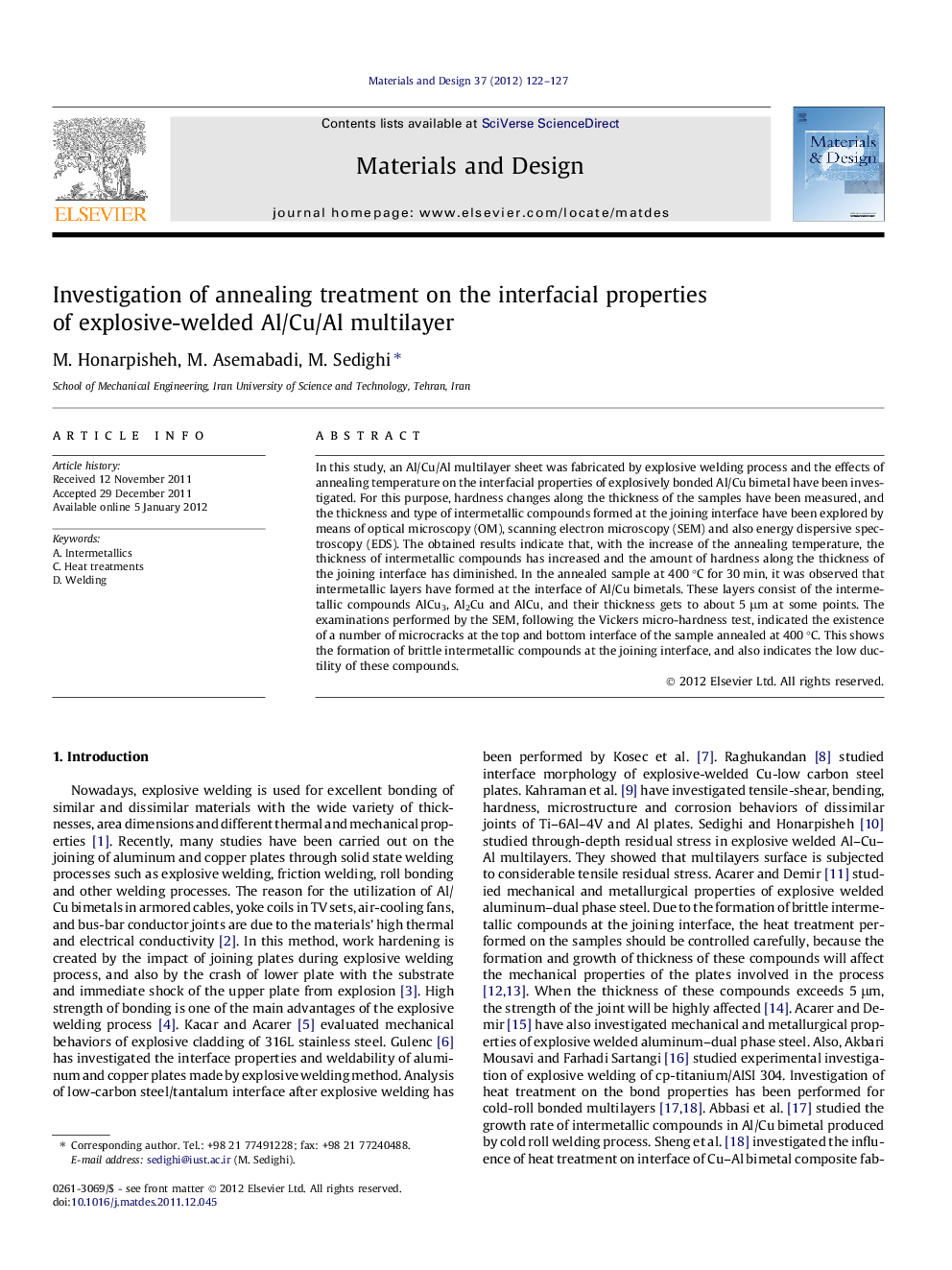| Article ID | Journal | Published Year | Pages | File Type |
|---|---|---|---|---|
| 830743 | Materials & Design (1980-2015) | 2012 | 6 Pages |
In this study, an Al/Cu/Al multilayer sheet was fabricated by explosive welding process and the effects of annealing temperature on the interfacial properties of explosively bonded Al/Cu bimetal have been investigated. For this purpose, hardness changes along the thickness of the samples have been measured, and the thickness and type of intermetallic compounds formed at the joining interface have been explored by means of optical microscopy (OM), scanning electron microscopy (SEM) and also energy dispersive spectroscopy (EDS). The obtained results indicate that, with the increase of the annealing temperature, the thickness of intermetallic compounds has increased and the amount of hardness along the thickness of the joining interface has diminished. In the annealed sample at 400 °C for 30 min, it was observed that intermetallic layers have formed at the interface of Al/Cu bimetals. These layers consist of the intermetallic compounds AlCu3, Al2Cu and AlCu, and their thickness gets to about 5 μm at some points. The examinations performed by the SEM, following the Vickers micro-hardness test, indicated the existence of a number of microcracks at the top and bottom interface of the sample annealed at 400 °C. This shows the formation of brittle intermetallic compounds at the joining interface, and also indicates the low ductility of these compounds.
► We studied explosive-welded Al/Cu/Al multilayer. ► We investigated heat treatment influence on the bond properties of Al/Cu/Al. ► Intermetallic compounds were studied using the SEM, OM and EDS analysis. ► Variations of hardness in the thickness were investigated using micro-hardness. ► Intermetallic phases such as AlCu3 and Al2C create at the interface of Al/Cu/Al.
